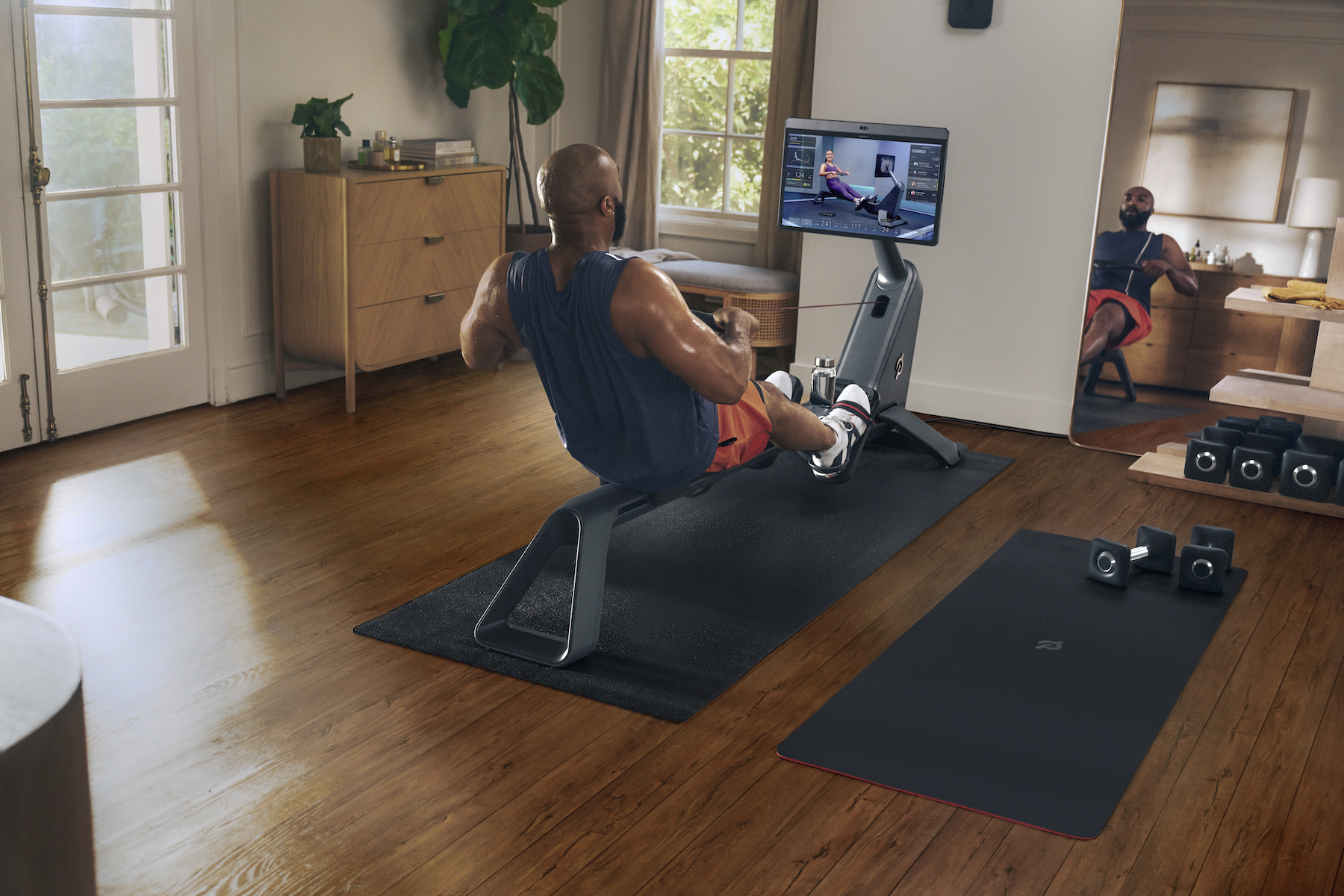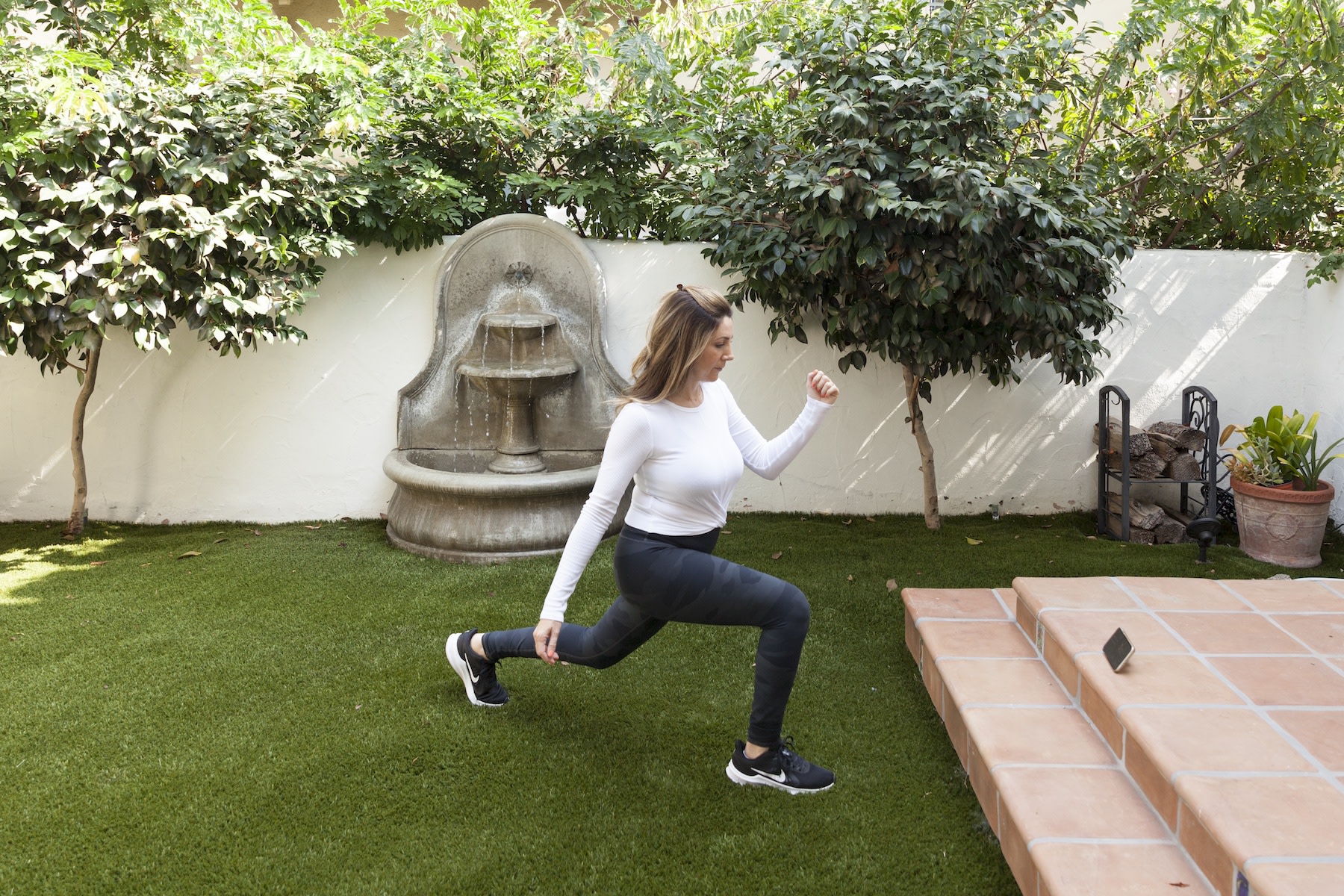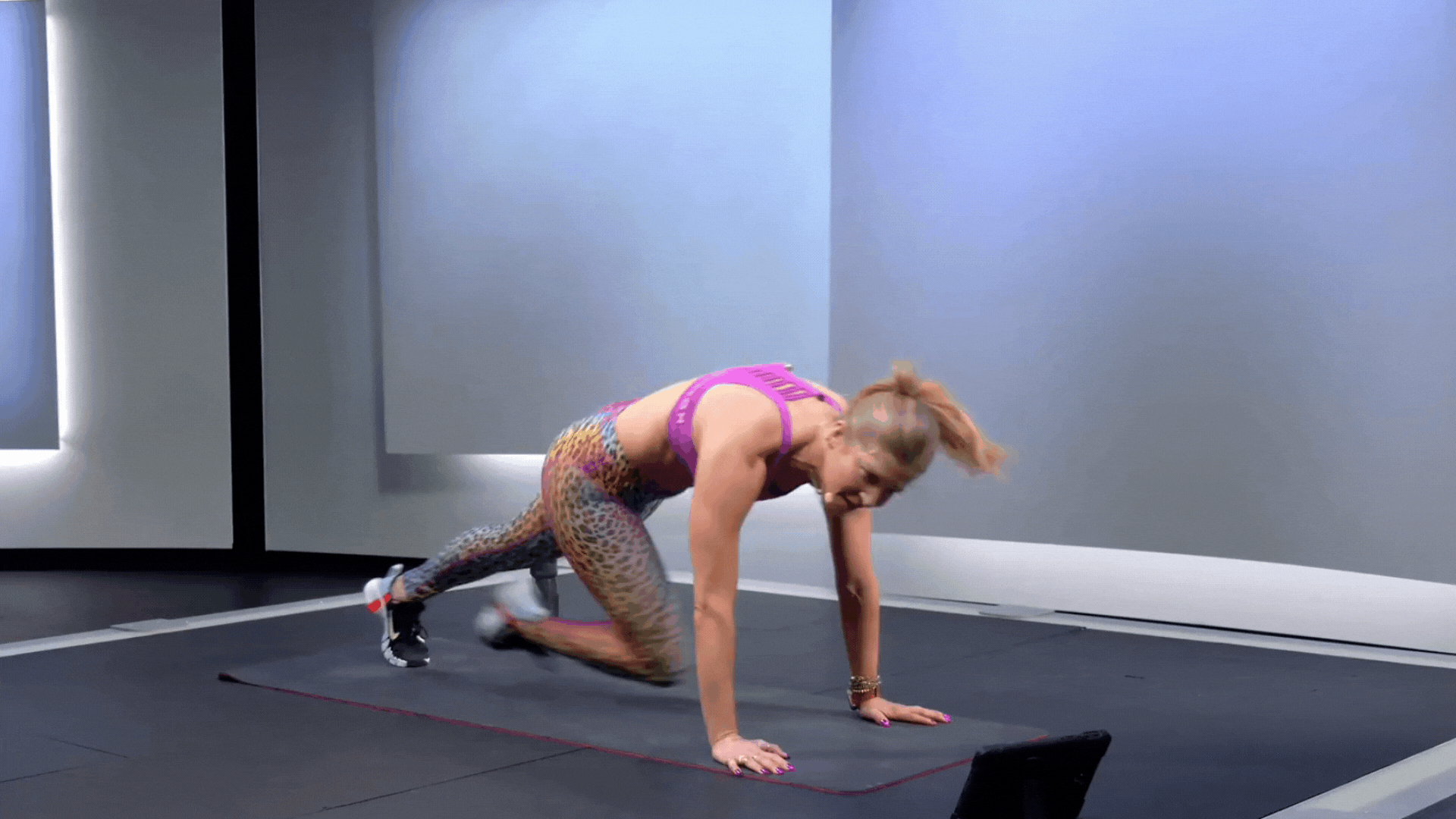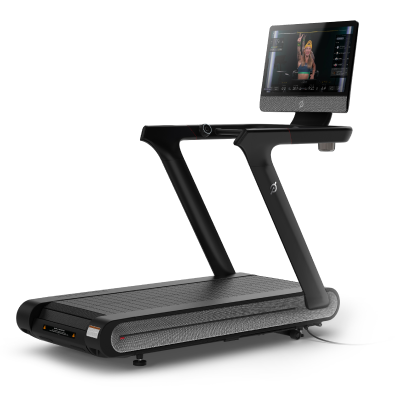
boonchai wedmakawand/Moment via Getty Images
7 Benefits of Low-Impact Workouts—And Why Fitness Pros Love Them
Low-impact does not mean low intensity.
By Erin Bunch •
What Is Low-Impact Exercise?
The Benefits of Low-Impact Workouts
8 Low-Impact Workouts
3 Low-Impact Exercises
Inchworm Push-Up
5 High-Impact Exercises, Modified to Low-Impact
Low-Impact vs. High-Impact Workouts: How to Know What’s Best For You
Takeaway
Exercise of any kind is important, but some forms of fitness are more sustainable long-term than others. High-impact exercise, such as running, can be hard on the body over time, which is why you may be looking for other alternatives to sprinkle into your routine. Low-impact exercise, on the other hand, is gentle on the joints, which is why most fitness professionals advise incorporating it into your workout regimen.
This form of exercise allows you to stay fit—both cardiovascularly and in terms of strengthening muscles—without incurring a ton of wear and tear on your joints. This enables you to comfortably workout at every stage in life, and can help to prevent injury that may be debilitating down the line as well. But just what is low-impact exercise, and how is it different from exercise that is low in intensity? Below, Peloton instructor Rebecca Kennedy unpacks everything you need to know about this gentle but effective form of exercise.
What Is Low-Impact Exercise?
When you hear the term “low-impact exercise” you might think it’s referring to exercise that is low in intensity, a.k.a. easy. This isn’t the case. “Low-impact exercise is movement that is gentle on your body and places less stress on the joints [than high-impact exercise], yet still provides a generous output of energy or resistance on the muscles and cardiovascular system,” says Rebecca. In other words, low-impact exercise is a highly effective form of fitness that’s not easy but rather easy on your body. Examples include hiking, walking, strength training, low-impact cardio, Pilates, and more.
Low-intensity exercise, on the other hand, involves reducing the amount of effort or intensity in your workouts, keeping your heart rate relatively low, and/or lifting lighter loads, says Rebecca.
Low-impact exercise can be low-intensity, but it can also be high-intensity as long as it’s a type of exercise that reduces the load and stress of your joints. For example heavy deadlifts are high in intensity but do not include any jumping or plyometric movements, which means they’re low in impact. Another example of a high-intensity, low-impact workout is hiking, or walking on the treadmill at 12-15 percent incline at a moderate to brisk pace. “This mimics the intensity of a flat jog or easy run cardiovascularly, but the impact on the joints is largely reduced, making it feel good and easier to do for most people,” says Rebecca.
The Benefits of Low-Impact Workouts
There’s a reason fitness experts love low-impact workouts and recommend everyone incorporate them into their fitness regimen, no matter their fitness level. Below, Rebecca runs—or, walks—through the benefits of this gentler form of exercise:
Fewer injuries and a better-feeling bod: Because they place less stress and strain on the joints, low-impact workouts leave the body feeling good both during and after the workout, says Rebecca. They also reduce the risk for longer-term injuries to joints like the knee, which can suffer over time from higher-impact workouts.
Reduced recovery time: “Since impact is reduced, recovery time is also reduced, enabling these types of workouts to be done more often—which is incredibly helpful when it comes to building a realistic and sustainable training routine,” says Rebecca.
Helps to build muscle mass and bone strength: Rebecca says including low-impact cardio and low-impact resistance training is “critical” to building muscle, maintaining strong bones, and improving endurance. “Specifically for women, it's incredibly important as we age to maintain as much muscle mass as possible to offset hormone reduction,” she says.
No limits: “I love that this type of workout can be done daily if desired, whereas HIIT only needs to be in your routine 1-2 times per week,” says Rebecca.
Accessible: “These workouts have a lower bar to entry, making this type of exercise suitable for almost all people,” she says.
Complements other forms of training: Rebecca says that low-impact exercise improves cardio conditioning, coordination, and balance.
Fun!: “These workouts are endorphin-boosters, and allow people to feel successful right away, which is a big confidence-booster,” says Rebecca.
8 Low-Impact Workouts
One of the best things about low-impact workouts is that there is a lot of variety within the category, and you can engage in both low-impact cardio and low-impact resistance training. Some examples of low-impact workouts include the following:
Hiking
Kennedy defines hiking as a 20-30 min walk at a 10-15 percent incline, and a speed between 2.5-3.5 miles per hour. You can hike outdoors or in—for the latter, try Peloton’s Hike classes on the Peloton Tread.
Explore Peloton Treads
Taking a simple 30-60 min outdoor walk is a great way to incorporate low-impact exercise into your fitness regimen, says Rebecca. Walking on a treadmill also works, and the Peloton App has a number of classes that will keep your indoor walks motivated and exciting.

Cycling of all kinds is considered low-impact exercise, so whether you hit the streets on your bike or clip into a Peloton Bike, pedaling it out can be a great low-stress way to get fit.
Explore Peloton Bikes
Pilates is a famously low-impact way to strengthen your entire body. The Peloton App offers Pilates classes at all levels.

Rowing is great if you’re looking for a low-impact cardio workout that also strengthens muscles in your shoulders, arms, and back. If you have a Peloton Row at home, you can try classes at any level on the Peloton Row.

Peloton Row
Work 86% of your muscles in just 15 minutes.
Pilates isn’t the only form of strength-training exercise that’s low-impact. On the Peloton App, you can find low-impact strength training workouts that utilize dumbbells, resistance bands, and bodyweight.
Some forms of dance cardio can also be low-impact, says Rebecca. You can find low-impact cardio class options on the Peloton App.
Swimming
Swimming is a full-body workout that does not strain the joints, due to the buoyancy of the water.
If you’re looking for specific low-impact exercises, here are a few of Rebecca’s favorites:
3 Low-Impact Exercises
Clear the Room
Stand with arms straight out in front of you, feet together.
Open and close the arms twice as you take two steps to the right.
Repeat to the left.
Repeat the entire movement for a 30-60 second set.
Repeat set for desired reps.

Stand with your feet shoulder-width apart and arms down by your sides.
Step forward with your right leg, putting the weight into your right heel.
Bend the right knee, lowering down into a lunge position.
Pause for a beat.
Keeping your right leg in place, move your left foot forward, putting weight into your left heel.
Bend the left knee, lowering down into a lunge position.
Pause for a beat.
Repeat this movement, walking forward as you lunge and alternating legs, for desired reps.
Inchworm Push-Up
Stand with your feet shoulder-width apart.
Roll down and walk hands out to high plank
Push-up on toes, walk hands back in, and roll up.
Repeat for desired reps.
5 High-Impact Exercises, Modified to Low-Impact
Some high-impact exercises can be modified to be low-impact. In fact, Rebecca’s Peloton classes often take the format of a HIIT workout, but swap the usual movements with low-impact versions. Here are some of her favorite modifications:
Squat Jumps
The low-impact version of this move, says Rebecca, becomes an air squat with a calf raise. “There is no jumping with the low-impact version,” she says. This modification can also serve as an alternative to a box jump.
Stand with feet shoulder-distance apart.
Squat by bending at the knee and sending your hips behind you. Knees should stay in line with your feet. Arms should come together into a prayer pose at your chest.
Stand up while swinging your arms down by your side.
Slowly raise up to the balls of your feet.
Slowly lower your heels back down.
Repeat for desired reps.
Snatches
These become ‘ground-to-sky’ exercises, says Rebecca.
Stand with feet hip-distance apart.
Hinge at your hips, reaching for the ground between your feet.
Then, reach up to the sky, standing up tall.
Repeat for desired reps.
Jumping Jacks
Jumping jacks become no-jump jacks, says Rebecca. “It’s just like a jumping jack, but you eliminate the jump,” she says.
Tap one foot at a time side-to-side, with arms swinging up and down.
Repeat for 30-60 seconds.
Low-impact burpees eliminate the mid-burpee jump.
Stand with feet shoulder-width apart, arms by your sides, toes pointed forward.
Squat by bending at the knee and sending your hips behind you. Knees should stay in line with your feet. Arms should come together into a prayer pose at your chest.
Bend at the waist and place your hands flat on the floor in front of your feet.
Shift your weight into your hands.
Walk feet out to plank position one by one.
Hold the plank for a few seconds.
Bring your feet back into a squat, one by one.
Stand up.
Reach your arms up over your head.
Repeat for desired reps.

The only difference between a high-impact mountain climber and a low-impact mountain climber is the pace at which you move your legs. High-impact will feel more like a ‘jog’, while low-impact should feel more like a ‘walk.’ With low-impact mountain climbers, one foot should be on the ground at all times, and your motion should be slower and more controlled.
Start in a plank position.
Bring your right knee to your chest, making sure to keep your right foot elevated.
Return your right foot back to the plank position.
Repeat on the left side.
Quickly alternate sides for desired number of reps.
Low-Impact vs. High-Impact Workouts: How to Know What’s Best For You
According to Rebecca, low-impact exercise is beneficial for everyone at all ages, levels, and goals. More specifically, here are some examples of those who may benefit from low-impact exercise:
Beginners: “If your goal is to begin a new training routine or maintain your current fitness level, low-impact exercise is perfect,” she says.
Those wanting to build muscle: If your goal is to build muscle, Rebecca recommends primarily focusing on strength training, and then adding in 10-30 minutes of low-impact cardio training after your lifts, or doing 30-45 minutes of low-impact cardio on your non-lifting days.
Those recovering from an injury: “If your goal is to come back safely from an injury, low-impact exercise is gentle on the joints,” she says.
Those training for a race: “This is an excellent way to get in more endurance training on your non-training run days,” says Rebecca.
Pre- and post-natal individuals: Low-impact exercise can be a safe and advantageous workout to begin with (as long as you are cleared by your doctor) and slowly add in more over time, says Rebecca.
High-impact exercise has its unique benefits as well, says Rebecca. For example, it can help you reach the high end of your aerobic capacity, raising your heart rate to zones 4-5, she says, whereas low-impact workouts keep you between zones 2-3. Boosting your heart rate in this way helps to build cardiovascular endurance and improve heart health.
High-impact exercise is also useful because it’s beneficial to stress the joints in a limited capacity weekly in order to make sure your joint capacity is getting stronger, says Rebecca. Strengthening your joint capacity—a.k.a. the muscles, tendons, and ligaments that support and stabilize your joints—is crucial for maintaining long-term mobility, preventing injuries, and enhancing overall physical performance.
Still, Rebecca emphasizes that because high-impact workouts require more recovery time during and between workouts, they’re not something that should be done daily. “They can raise stress hormone levels within the body and also have a higher risk of injury,” she says. “The bar to entry to high-impact workouts is also higher, so it's something to work up to, but not the best starting place as a cardio option,” she says.
Takeaway
If you’ve been engaging only in high-impact exercise, it’s time to incorporate low-impact exercise into your fitness regimen. Doing so will benefit your body in both the short and long-term. This is likely good news, because low-impact workouts can be as simple as taking a walk around the block or on a treadmill, can be done every day, and there is a lot of variety within the category. Not sure where to start? Check out the following class types on the Peloton App: Low-impact cardio; Rowing; Cycling; Walking; Pilates; and other forms of strength-training.

Peloton App
Access thousands of classes with no equipment needed.
This content is for informational and educational purposes only and does not constitute individualized advice. It is not intended to replace professional medical evaluation, diagnosis, or treatment. Seek the advice of your physician for questions you may have regarding your health or a medical condition. If you are having a medical emergency, call your physician or 911 immediately.
Our Products
Level up your inbox.
Subscribe for a weekly dose of fitness, plus the latest promos, launches, and events.
By providing your email address, you agree to receive marketing communications from Peloton.
For more about how we use your information, see our Privacy Policy.
















